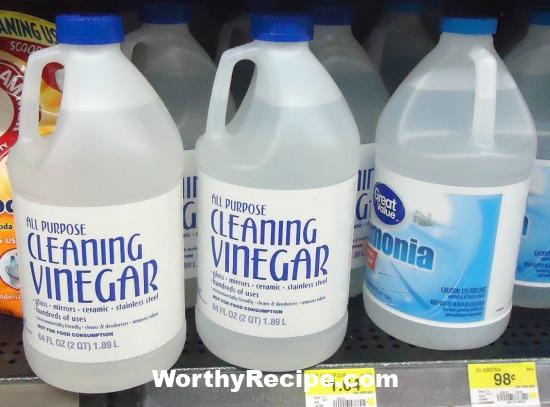Introduction
The George Foreman grill has become a household name in kitchen appliances for over three decades now. It’s known for its fast and convenient way of grilling food while reducing the amount of fat that ends up in your meal. However, there have been growing concerns about its safety, with many people questioning whether the grill is toxic or not. This article aims to explore this controversy and provide a comprehensive guide to using the George Foreman grill, including its potential health risks and safety measures.
Understanding the George Foreman Grill
The George Foreman grill uses electric heating elements and non-stick cooking plates to cook food quickly and efficiently on both sides simultaneously. The ridged surface of the plates helps drain fat away from the food, making it a popular choice for those looking for healthier ways to cook their meals. The appliance comes in various sizes and styles, from small compact models suitable for one or two servings to larger ones that can prepare meals for an entire family.
- Types of George Foreman grills available
- Classic grill: Has a basic design that features a grilling surface, drip tray, and adjustable angle feature. It’s perfect for basic grilling tasks like cooking burgers, hotdogs, or vegetables.
- Indoor/Outdoor Grill: As the name suggests, this model is suitable for both indoor and outdoor use. It comes with removable stand legs and features a large cooking surface that can accommodate multiple servings at once.
- Multi-Plate Evolve Grill System: This model features interchangeable grilling plates that allow you to cook different types of food such as waffles, paninis, among others.
- Common Uses and Benefits
There are several variations of George Foreman grills available today, including:
The George Foreman grill has several benefits, including faster cooking times compared to conventional grilling methods. It’s also a healthy alternative to traditional grills, as it requires little to no oil, which helps reduce fat content in meals. The appliance is easy to use and perfect for people who live in apartments or those with limited outdoor space.
Potential Health Risks Associated With Using the George Foreman Grill
One of the biggest concerns surrounding the George Foreman grill is its safety, with some experts believing that some of the chemicals used in its manufacturing process could be toxic to human health. Some of these chemicals include PTFE and PFOA, both of which are commonly used in non-stick cookware.
- What makes people think it’s toxic?
- How do PTFE, PFOA, and other chemicals come into play?
- Exploring Scientific Studies That Link These Chemicals To Health Issues
Some people believe that prolonged exposure to PFOA and PTFE chemicals can lead to health complications such as kidney damage, liver problems, and even cancer. However, there is limited scientific evidence to support this claim.
PTFE (polytetrafluoroethylene) is a type of plastic polymer that’s resistant to heat and chemicals. It’s commonly associated with the Teflon brand. Meanwhile, PFOA (perfluorooctanoic acid) is a synthetic chemical used in the manufacturing of various products such as carpets, clothing, and cookware. Both of these substances can be found in the non-stick coating on the George Foreman grill plates.
Although there have been a few studies linking these chemicals to health complications, most have relied on mice and rats as subjects, which have been exposed to high levels of the substances over extended periods. According to the Environmental Working Group, there has been limited research on humans in this regard. As of now, there are no conclusive studies that strongly link the use of non-stick cookware, including the George Foreman grill, to serious health issues.
Safety Measures When Using a George Foreman Grill
When it comes to using a George Foreman grill, there are some safety measures you may want to keep in mind. While these won’t make your grilling experience completely risk-free, they can help minimize potential health hazards that may arise from using the appliance.
- Preparing your food for healthy grilling
- Tips for proper cleaning and maintenance
- What to do if your grill shows signs of wear and tear
One way you can ensure healthy grilling is by choosing healthy foods to cook. This means avoiding fatty meats and using vegetables instead. You may also want to trim any unwanted fat from your meats before grilling. Additionally, you should preheat your grill to allow food to cook evenly and kill any bacteria present on the plates.
Cleaning your grill after each use is essential in preventing build-up that may increase the risk of off-gassing chemicals into your food during subsequent cooking sessions. The best way to clean your appliance is by using warm soapy water and a scrub brush after it has cooled down. Ensure that you rinse it thoroughly and let it dry properly before storing it away safely.
If you notice any parts of your grill start showing worn or damaged areas such as scratched non-stick plates or loose handles. It means it’s time to replace them immediately to avoid exposing yourself further to any toxic substances.
Debunking Common Myths About Using a George Foreman Grill
There are plenty of myths floating around about the safety of the George Foreman grill, but how many of them are true?
- Discussing common misconceptions on cooking with this appliance
- Are premium-priced grills safer/better for your health?
One of the most common myths surrounding George Foreman grills is that they can cause cancer. However, as we highlighted earlier, there is limited scientific evidence to support this claim. The other myth is that cooking on a plastic plate can lead to toxic substances being released. In truth, George Foreman grills have non-stick plates which may include chemical substances in their manufacturing process.
The higher price points for some models do not necessarily mean they have better safety features. Instead, brands have different price points depending on their additional features while maintaining the same non-stick coating technology used in basic models.
Alternatives to a George Foreman Grill That You Can Consider
If you’re looking for alternatives to using a George Foreman grill due to concerns over its safety, there are several other options available.
- What are other options?
- Pros and Cons
You may find it helpful to look at air fryers, electric griddles, stove-top griddles as alternative options that offer similar functionalities when it comes to cooking healthier food. These alternatives also provide the flexibility of cooking different types of food and have easy maintenance procedures.
Air fryers tend to be more expensive than most other non-grill alternatives, but they come with great features such as adjustable temperature settings, broad menu options for your cooking creativity and have been known to produce excellent cooking results. On the other hand, electric griddles and stove-top griddles tend to offer slightly more room for larger meal prep options. The downside is that they produce more oil compared to George Foreman grills and may require frequent clean-up.
Buyer’s Guide To Finding The Best Grilling Appliance For Your Health
If you are still searching for a grill that suits your health needs, there are aspects you may want to consider before heading out shopping.
- Factors to consider when buying a replacement appliance:
- Cooking surface size: Consider the size of the grilling surface needed for your usual cooking plans.
- Temperature control: Some non-grill alternatives tend to have temperature-control features that boost versatility during cooking. Select items that cater to your preferred cooking initiatives.
- Maintenance cost: Another critical factor in selecting any kitchen appliance is maintenance cost. Can you afford regular cleanings, replacements or upgrades of significant parts over time?
- Brands That Prioritize Health Safety
You should prioritize brands that demonstrate efforts towards ensuring user safety regarding their manufacturing process. Some manufacturers endorse safer coatings such as ceramics or stainless steel surfaces, while others provide toxin-free cooking plates. One notable example is the Green Life Grill, which utilizes ceramic coatings already certified safe by notable authorities such as the FDA (Food and Drug Administration).
Conclusions
The George Foreman grill has been around for several decades now, and it remains an endearing kitchen essential for many households globally. While some people worry about the health implications of using this appliance, there is no conclusive evidence suggesting serious harm from using it appropriately.
To add more peace of mind concerning your health; you can follow simple preventative measures when cooking with a George Foreman grill. At last, opting for alternatives that suit your health needs best and have gone through several safety checks before the manufacturing stage can provide healthier cooking solutions.
FAQ Section
Below are some of the most frequently asked questions concerning the controversy surrounding the safety of using a George Foreman grill.
What is PTFE or Teflon?
PTFE or Teflon is a synthetic polymer most often associated with non-stick cookware such as the George Foreman grill.
Why are they associated with cancer?
There are several concerns surrounding PFOA and PTFE use in cookware. However, this comes from research primarily on animals and has not yet been established to present imminent danger for humans.
Are there any alternatives to PTFE or Teflon coatings?
Many eco-friendly and health-focused brands offer ceramic-coated non-stick grilling surfaces as viable options for their customers.
Can’t I just use a George Foreman Grill once in a while and not worry about the health risks?
The risk factor highly depends on the level of usage of any appliance in general; however, maintaining safe procedures, such as cleaning your appliance correctly, significantly helps combat any potential risk.
Is there a problem with homemade marinades?
No, homemade marinades are an efficient way to add flavor to your grilled meals while minimizing the number of processed ingredients consumed during cooking time.With this guide, you can safely enjoy tantalizing grilled dishes commonly cooked on your George Foreman grill with ease!
Frequently Asked Questions
1. Is the George Foreman grill safe to use for cooking food?
Absolutely! The George Foreman grill is not toxic and has been approved by the FDA as a safe appliance for cooking food.
2. What materials is the George Foreman grill made of?
The plates of the grill are coated with a non-stick, Teflon-like material that may contain PTFE or PFOA. However, the coating is only meant to touch food during cooking and there is no evidence that it poses any health risks.
3. Can the George Foreman grill release harmful substances when heated?
No, the George Foreman grill does not release any harmful substances when heated, as long as it is used according to the manufacturer’s instructions. It utilizes electric heat and its non-stick surface is designed to minimize smoke and fumes.
4. Are there any special precautions I should take when using the George Foreman grill?
As with any kitchen appliance, it’s always a good idea to use caution when operating the George Foreman grill. Be sure to follow all safety guidelines recommended in the instruction manual and never leave it unattended while in use. Always make sure to clean it thoroughly after each use to prevent any buildup of bacteria or residue.






